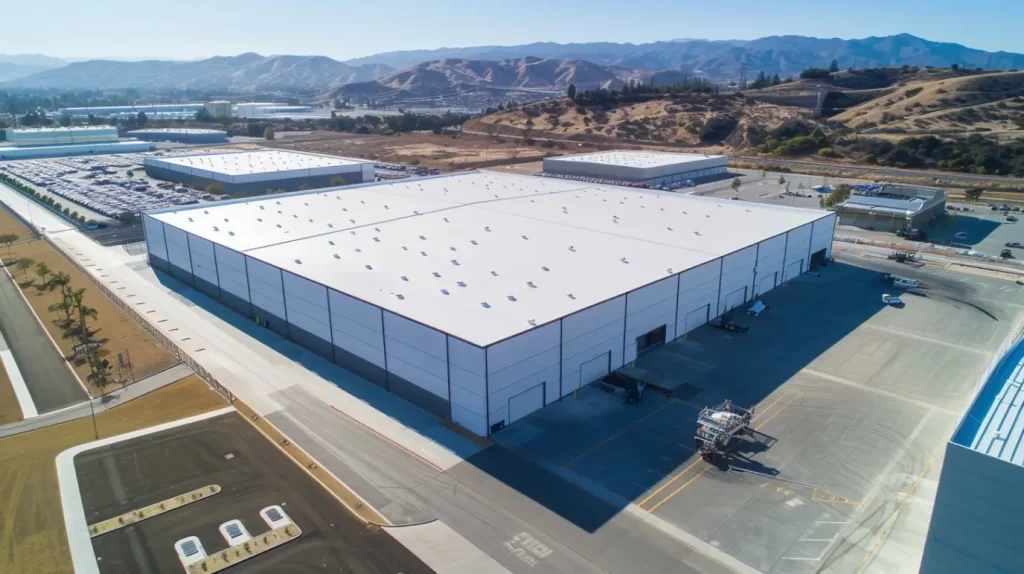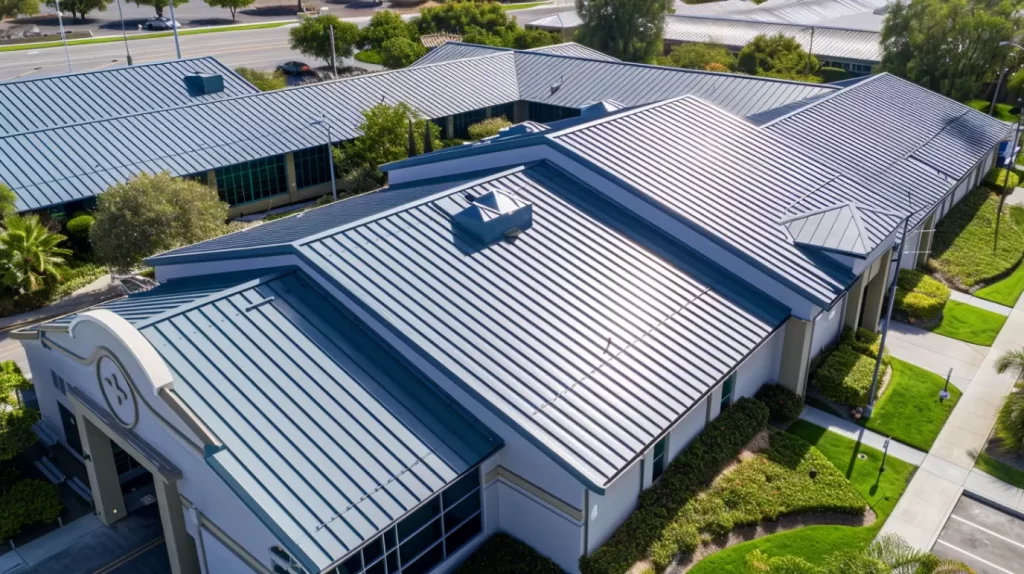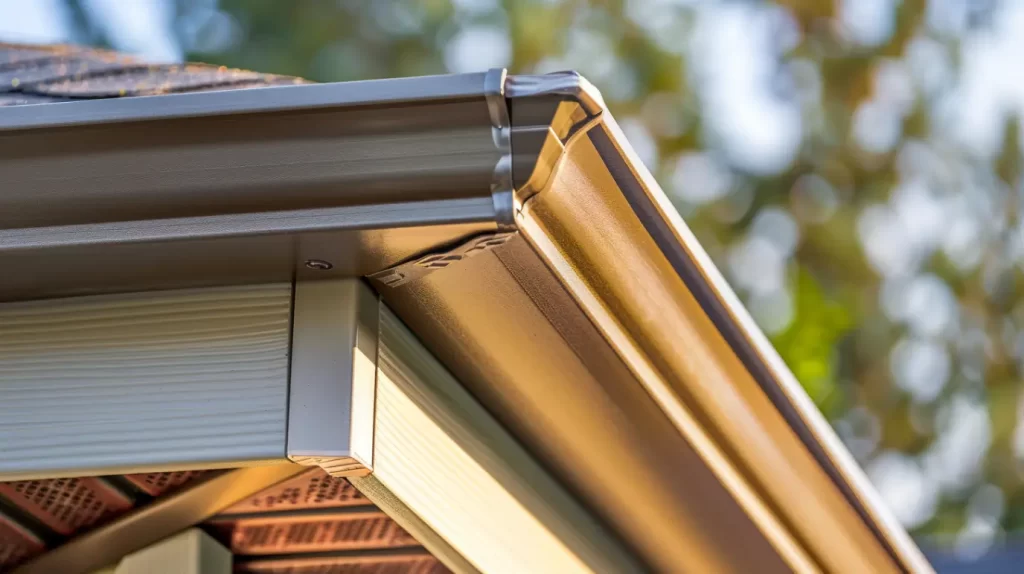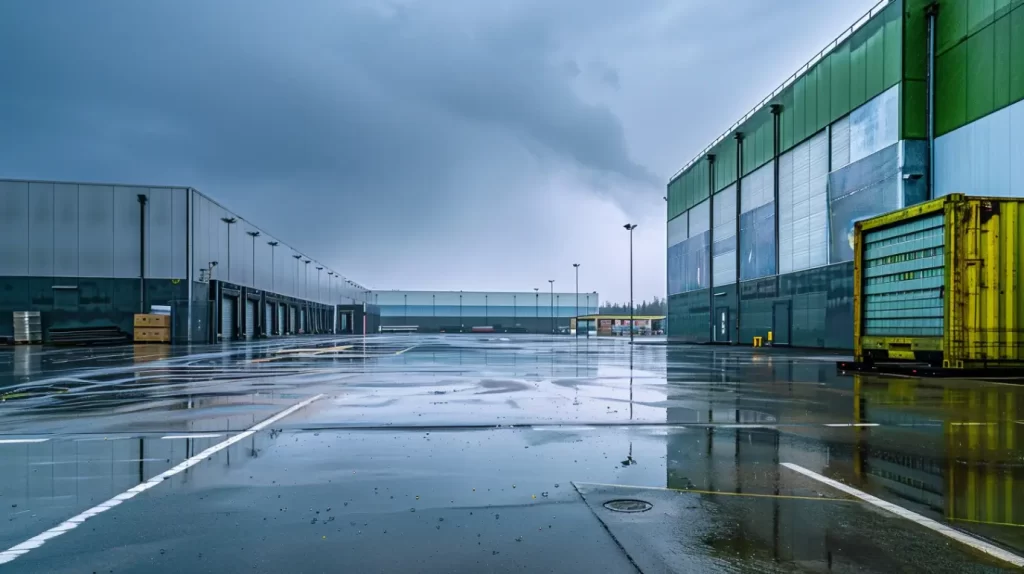Timing is everything when it comes to large-scale roof replacement projects for commercial properties. Choosing the right seasonal window not only protects your building from harsh weather conditions but also boosts energy efficiency and helps manage overall project costs. In Orange County, CA, where the climate varies throughout the year, partnering with an award-winning, professional contractor like Fontaine Roofing ensures your roofing project is scheduled for maximum performance. This guide will help you determine the best seasonal strategies and timing for a successful, hassle-free installation.
Factors Influencing the Timing of Large-Scale Roof Replacements
Several factors influence the best time for large-scale roof replacement. Weather conditions, such as extreme temperatures, rain, or wind, can affect installation and material performance. The roofing material and system complexity also play vital roles in project timelines.
In Orange County, CA, it’s important to consider local climate patterns and building codes. Property managers and HOAs must account for regulations and inspection schedules that may impact the start and completion of commercial roofing work.
Contact Us
Regional Weather Patterns in Orange County, CA
Orange County, CA, features mild winters and warm summers, making it ideal for year-round roofing. However, heavy winter rains and late summer heatwaves can disrupt schedules and affect material performance.
Spring and early fall are optimal for large-scale roof replacements due to milder weather, ensuring consistent conditions for installation and minimizing delays and costs.
Recognizing regional weather patterns enables property managers and HOAs to schedule projects during stable periods, safeguarding structural integrity while enhancing energy efficiency and curb appeal for commercial properties.
Understanding Roofing Material Requirements
Choosing the right roofing material is essential for large-scale replacements. Materials affect durability, aesthetics, energy efficiency, and maintenance. Asphalt shingles are popular in Orange County, CA, due to their cost-effectiveness and easy installation.
Local climate also influences material performance under extreme conditions. Advanced options like metal roofing or green roofs provide better energy savings but may have higher upfront costs. Aligning your choice with building codes and project requirements will enhance the roof’s longevity and functionality.

Seasonal Windows: An Overview for Commercial Roof Projects
“Seasonal windows” refer to the periods in the year when weather conditions, material performance, and labor market factors align for the most effective commercial roof replacements. Scheduling work within these windows helps property managers achieve not just a new roof, but also improved energy efficiency and minimized project delays.
Choosing the right seasonal window can also influence energy bills and the overall cost of your roofing project. Fontaine Roofing provides expert guidance to help you select the season that balances time, budget, and long-term value for your commercial property.
Defining Peak and Off-Peak Roofing Seasons
Identifying peak and off-peak roofing seasons is crucial for optimizing window replacement projects and ensuring efficient installations. Peak seasons, typically spring and early fall in regions like Orange County, offer milder weather that enhances energy efficiency and supports optimal roofing material choices.
In contrast, off-peak seasons, such as winter, present challenges like extreme temperatures and increased precipitation. Understanding these patterns enables property owners to strategically time their roofing projects, avoiding delays and potential costs. A well-planned schedule can yield significant savings while meeting customer service goals and tenant needs.
Coordinating Replacement Schedules with Tenant or Occupant Needs
Effective coordination of replacement schedules with tenant needs enhances the roof replacement experience. Early engagement allows for understanding individual schedules and minimizing disruption, creating a supportive atmosphere essential during renovations, especially for commercial roofs.
Flexibility in the installation process is vital, particularly in areas with unpredictable weather. Scheduling work during off-peak hours or weekends can prevent interruptions while meeting legal requirements. Ensuring access to facilities during installation boosts customer service and maintains safety and productivity on site. Ultimately, aligning the roofing timeline with occupant needs leads to smoother operations and increased tenant satisfaction.

Pros and Cons of Spring Roof Replacements
Spring is often seen as an excellent choice for large-scale roof installation thanks to moderate weather and improved natural light conditions. This season allows for efficient roof replacement and window installation, potentially boosting energy savings and curb appeal.
However, property managers should also weigh the disadvantages, such as unpredictable rainfall or last-minute weather swings. Understanding both sides helps you decide if spring aligns with your project’s timeline and building requirements. Let’s explore these aspects further in the next sections.
Advantages of Spring Weather Conditions
Favorable spring weather offers numerous advantages for large-scale roof replacements. Mild temperatures and increased sunlight enhance the adhesion of roofing materials, boosting contractor efficiency. This season generally avoids the extremes of summer and winter, reducing installation risks and minimizing delays from unpredictable weather.
Additionally, spring’s vibrant aesthetics enhance curb appeal, making new roofs stand out against blooming landscapes. New roofing materials can improve energy efficiency by maintaining comfortable indoor temperatures and lowering energy bills. This transition period enables homeowners to address roofing needs while preparing for summer heat.
Potential Challenges Unique to Spring
Spring symbolizes renewal but presents challenges for large-scale roof replacements. Weather variability, like unexpected rain and temperature changes, can delay installations. Seasonal demand often leads to longer wait times for materials, complicating scheduling and increasing costs.
Strong winds also jeopardize worker safety and roofing integrity during installation. Monitoring weather forecasts and careful planning are crucial to address these issues. Clear communication with all stakeholders, including tenants and the editorial team, helps navigate these challenges while ensuring customer service and project efficiency remain high.

Summer Roof Replacements: What to Expect
Summer remains a popular choice for commercial roof replacement thanks to consistently warm, dry conditions. This period provides a reliable window for roof and window installation, helping reduce the chances of weather-related interruptions.
However, higher temperatures can introduce unique challenges such as increased labor costs, material handling difficulties, and the risk of higher energy bills due to heat gain. Understanding what to expect during the summer months sets the stage for smart planning and budgeting as you consider your project’s specifics.
Benefits of Warm, Dry Conditions for Roofing
Working in warm, dry conditions greatly enhances roof installation. Such environments reduce moisture issues, ensuring better adhesion of roofing materials. Warm temperatures also aid in curing adhesives and sealants, crucial for durability.
Favorable weather allows teams to coordinate schedules effectively, minimizing delays and reducing labor costs while improving customer service. A well-executed roofing project in ideal conditions boosts long-term performance and energy efficiency, helping property owners save on bills. Proactive planning underscores the importance of choosing the right season for roof replacements.
Managing Labor, Cost, and Sun Exposure Risks
Effective labor and cost management is vital during large-scale roof replacements, especially in sunny areas like Orange County, CA. Careful scheduling can mitigate extreme temperatures, ensuring worker safety while maintaining quality. Installing roofs outside midday sun exposure reduces fatigue and boosts productivity, helping teams meet tight deadlines and lower labor costs.
Additionally, selecting the right roofing materials is essential for energy efficiency and reducing future bills. Choosing materials suited to the local climate minimizes long-term maintenance and enhances curb appeal. By aligning labor needs with optimal installation times, businesses can achieve competitive pricing and cost savings.

Fall as an Optimal Season for Roof Replacement
Many roofing experts agree that fall is the ideal time for large-scale roof replacement in Orange County, CA. Early fall offers stable temperatures and low humidity, allowing roofing materials to set and seal perfectly. This season also provides a valuable window for property managers to complete projects before the rainy season begins, maximizing both energy savings and cost effectiveness.
Fall’s predictable climate and manageable demand mean that both labor and material resources are readily available, ensuring smooth progress and minimal disruption.
Stable Temperatures and Predictable Schedules
Optimal roof replacement conditions arise from stable temperatures, ensuring efficient installation. Consistent fall weather allows crews to work without delays often caused by extreme temperatures that can affect materials like asphalt shingles and metal roofing. Ideal conditions facilitate a smooth transition between project phases, from gutter installation to final inspections.
Predictable schedules reduce wait times and optimize labor costs. Property managers can also coordinate with tenants to minimize disruption, enhancing customer service while promoting energy efficiency in alignment with the building’s architectural style.
Preparing for Rainy and Cooler Weather Transitions
As seasons shift to rain and cooler temperatures, careful preparation is vital for successful roof replacements. Choosing durable materials like metal roofing or high-quality asphalt shingles can help withstand harsh weather.
Scheduling installations in early fall ensures stable weather, reducing risks of extreme temperatures and delays. A solid roof maintenance strategy addressing gutter installation and drainage enhances energy efficiency. By anticipating these changes, property owners can save costs, prolong their roof’s lifespan, and improve the aesthetic and functionality of their premises.

Winter Roof Replacements: Challenges and Considerations
Winter is typically the least favorable time for roof installation, but financial or safety needs may require cold-season projects. In Orange County, the milder winter weather can still bring unexpected rain and cooler temperatures that challenge roofing and gutter work. Partnering with an experienced contractor like Fontaine Roofing— a GAF Master Elite Contractor and CertainTeed Shingle Master— is essential. As a Polyglass Preferred Contractor and FiberTite approved applicator, we manage seasonal risks while adhering to building codes. We are also an IB Roofing Systems Authorized Applicator and TRI certified, showcasing our commitment to quality and professionalism on every project.
Risks Associated with Cold and Wet Conditions
Cold and wet conditions pose significant risks during a roof replacement project. Inclement weather can lead to compromised installation processes, which may affect the longevity and effectiveness of the new roofing system. Additionally, the presence of moisture can increase the likelihood of mold growth or damage to underlying structures. Workers face enhanced safety hazards due to slippery surfaces and reduced visibility. Ultimately, these risks can result in longer wait times and increased labor costs, underscoring the importance of careful planning in adverse weather scenarios.
Mitigating Delays and Ensuring Worker Safety
Effective project management strategies during roof replacements are crucial for mitigating delays and ensuring worker safety. Prioritizing robust communication and adhering to building codes can significantly reduce the risk of accidents in hazardous weather conditions. Employing appropriate protective gear and utilizing a reliable roofing system not only enhances productivity but also safeguards the crew. Implementing adaptive scheduling based on seasonal weather patterns allows for efficient progress while maintaining high standards of installation, ultimately leading to improved energy efficiency and cost savings for homeowners.
Get in Touch
Timing large-scale roof replacements is crucial for project success. Local climate and weather conditions significantly affect energy efficiency and installation. By strategically selecting window styles and roofing materials, homeowners can enhance aesthetics and save on energy costs. At Fontaine Roofing in Orange County, CA, we can guide you in making the best choices for your home. Prioritizing these factors boosts curb appeal and provides long-term savings on energy bills, ensuring value for your investment. For more information, contact us.
Read our blog: Roof Ventilation: Its Role in Multi-Unit Comfort & Health
Frequently Asked Questions
Can certain roofing materials be installed year-round regardless of the season?
Certain roofing materials, like metal and certain types of shingles, can indeed be installed year-round. However, it’s essential to consider local weather conditions and manufacturer guidelines to ensure proper installation and longevity of the roof. Always consult professionals for specific recommendations.
What is the highest rated replacement window?
When considering the highest-rated replacement windows, focus on energy efficiency, durability, and weather resistance. Brands like Andersen, Pella, and Marvin consistently receive top ratings for performance in various climates. Researching customer reviews and expert ratings can guide your decision on the best option for your needs.

